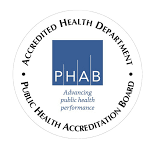- Home
- Data, Statistics & Registries
- Promoting Interoperability (PI) Program
- Syndromic Surveillance
- Syndromic Surveillance On-Boarding Process
Syndromic Surveillance On-Boarding Process
Click the steps below for more information.
- Step 1: Registration/Onboarding
- Step 2: In Queue
- Step 3: Staging/Validation
- Step 4: Production
- Step 1: Registration/On-boarding
Each Facility Type notifies ADH of interest in submitting Syndromic Surveillance data.
Complete the Syndromic Surveillance registration process through https://arcs.adh.arkansas.gov/ (ARCS- Arkansas Reporting and Communication System).
- Generates and evaluates Syndromic Surveillance electronic reporting test messages.
- Review the syndromic surveillance implementation guides:
- Arkansas Department of Health Guidance on the PHIN Messaging Guide for Syndromic Surveillance: Emergency Departments, Urgent Care Data and Ambulatory Care Settings (April 2015).
- HL7 Version 2.5.1 Implementation Guide: Syndromic Surveillance, Release 1 - US Realm o Erratum
- Erratum to the CDC PHIN 2.0 Implementation Guide (August 2015).
Note: These implementation guides serve as a reference for emergency departments and urgent care centers. Facilities may use the existing guides to develop syndromic surveillance messages for inpatient or ambulatory settings
- Use your designated EHR system to create a set of test messages according to the specifications in the implementation guides. Use of HL7 version 2.5.1 is required. The set of test messages should include at least one of each Admit Discharge Transfer (ADT) Message Trigger Type (i.e. A01, A03, A04, A08), the eligible hospital or professional intends to include in future submissions.
- Validate the HL7 message using the National Institute of Standards and Technology (NIST) Syndromic Surveillance HL7 V2.5.1 Validation Tool.
- Note: Profile Group Type: Profile Groups: PH_SS-Ack profiles will be used.
- Note: ADH requires the user to upload a validation report from NIST in order to place the provider/facility in a holding queue.
- Address any errors identified by the validation tool.
- Do not submit test messages containing personally identifiable health information.
- Select a data transport mechanism for the ongoing submission of Syndromic Surveillance data.
- ADH supports the following transport options:
- Virtual Private Network (VPN) - Preferred. A VPN creates a secure channel of communication (i.e., a "tunnel") over a public network, such as the Internet. Security is provided through authentication, which ensures that the connecting entity is authorized. Encryption is used to protect the data during transit.
- HTTPS Web Service (SOAP). Web Services include all other public health objectives within ADH.
- Secure File Transport Protocol (SFTP). SFTP is a network protocol designed to offer encrypted file management, encrypted file transfer, and encrypted file access functionality over a secure channel.
- Health Information Exchange and Arkansas State Health Alliance for Records Exchange (SHARE). The Arkansas HIE is implemented, which allows healthcare professionals to appropriately access and securely share a patient’s medical information electronically.
- Request to setup the transport mechanism from those listed above and notify for establishing a connection.
- Transmit a test message via connection.
- ADH supports the following transport options:
E-mail is not a secure mechanism of data transfer. Do not submit test messages containing personally identifiable health information through email. ADH reviews the messages and ensures that they meet standards specified for Arkansas, HL7 & Interoperability (where applicable).
- Step 2: In Queue
Each Facility is placed on a waiting list for confirmation to submit messages to staging for validation.
Facilities who successfully submit qualifying test messages are placed into the queue. ADH Program Coordinators will notify Facilities in order of registration.
Facilities can shorten waiting time to begin validation by providing ADH with Syndromic Surveillance validation reports and test messages as early as possible in the process. Once an eligible hospital or professional reaches the front of the queue, they will be notified by an ADH program coordinator when it is time to move on to Step 3: Validation.
Once an eligible hospital or professional reaches the front of the queue, the provider is notified by an ADH Program Coordinator when it is time to proceed to Step 3.
- Step 3: Staging/Validation
Facilities establish an ongoing electronic Syndromic Surveillance data feed to ADH and works with a Program Coordinator for data validation. Facilities will receive timely reports for working to correct errors and meet timeliness and data quality requirements.
- Step 4: Production
Facilities report via Syndromic Surveillance electronic feed, receive error reports as needed and participate in periodic quality assurance activities.
Continue ongoing submission of Syndromic Surveillance data to public health.
If the community identifies a need to follow up on data that indicates an event of potential public health concern, it will contact data providers. Eligible hospitals and professionals will be required to participate in periodic quality assurance checks to ensure accuracy of reporting. Arkansas Department of Health program coordinators will contact data providers to schedule these activities.
or
If ADH identifies a need to follow up on data that indicates an event of potential public health concern, it will contact data providers


